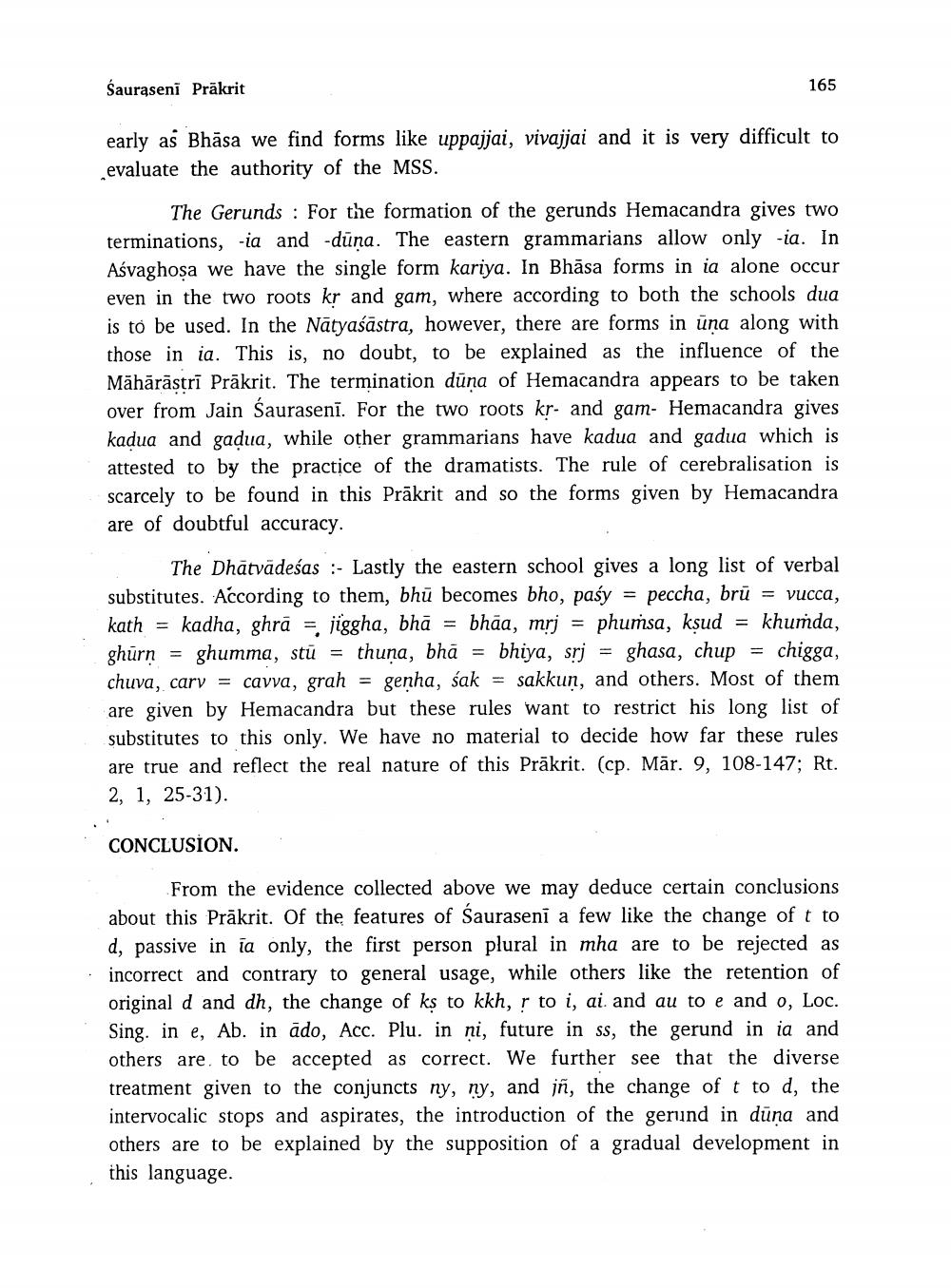________________
Śauraseni Prākrit
165
early as Bhāsa we find forms like uppajjai, vivajjai and it is very difficult to evaluate the authority of the MSS.
The Gerunds : For the formation of the gerunds Hemacandra gives two terminations, ia and -düna. The eastern grammarians allow only-ia. In Ašvaghosa we have the single form kariya. In Bhāsa forms in ia alone occur even in the two roots kr and gam, where according to both the schools dua is to be used. In the Nātyaśāstra, however, there are forms in üna along with those in ia. This is, no doubt, to be explained as the influence of the Māhārāstrī Prākrit. The termination dūņa of Hemacandra appears to be taken over from Jain Saurasenī. For the two roots kr- and gam- Hemacandra gives kadua and gadua, while other grammarians have kadua and gadua which is attested to by the practice of the dramatists. The rule of cerebralisation is scarcely to be found in this Prākrit and so the forms given by Hemacandra are of doubtful accuracy.
The Dhātvädeśas :- Lastly the eastern school gives a long list of verbal substitutes. According to them, bhū becomes bho, paśy = peccha, brū = vucca, kath = kadha, ghrä =, jiggha, bhā = bhāa, mrj = phumsa, ksud = khumda, ghurn = ghumma, stū = thuna, bhā = bhiya, srj = ghasa, chup = chigga, chuva, cary = cavva, grah = genha, sak = sakkun, and others. Most of them are given by Hemacandra but these rules want to restrict his long list of substitutes to this only. We have no material to decide how far these rules are true and reflect the real nature of this Prākrit. (cp. Mār. 9, 108-147; Rt. 2, 1, 25-31).
CONCLUSION.
From the evidence collected above we may deduce certain conclusions about this Prākrit. Of the features of Sauraseni a few like the change of t to d, passive in ia only, the first person plural in mha are to be rejected as incorrect and contrary to general usage, while others like the retention of original d and dh, the change of ks to kkh, ļ to i, ai. and au to e and o, Loc. Sing. in e, Ab. in ādo, Acc. Plu. in ni, future in ss, the gerund in ia and others are to be accepted as correct. We further see that the diverse treatment given to the conjuncts ny, ny, and jñ, the change of t to d, the intervocalic stops and aspirates, the introduction of the gerund in dūna and others are to be explained by the supposition of a gradual development in this language.




